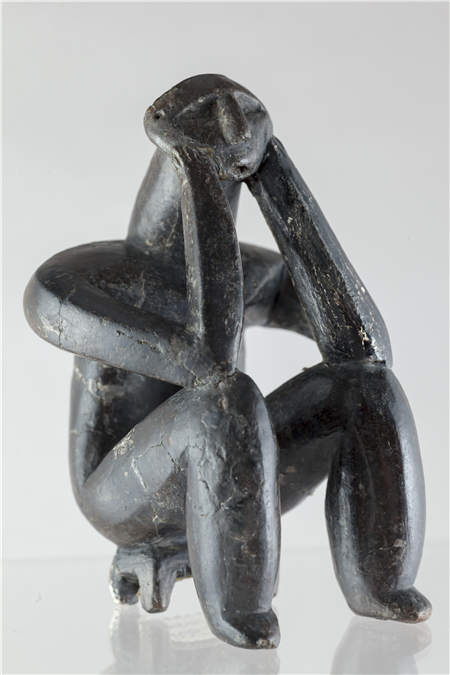 |
|
Exhibits from Treasures of Romania include a figurine, "the thinker", unearthed from a Neolithic grave in 1956. [Photos/China Daily] |
Fifteen years ago, a group of treasure hunters uncovered 24 spiralling, solid gold bracelets from the remains of Sarmizegetusa Regia, a site in Romania's central mountainous area that was the capital of Dacia, a once mighty kingdom until it was destroyed by the Romans in about AD 106.
The bracelets were traded in Europe and the United States via an international criminal network. It took Romanian authorities almost a decade to find and bring home 11 of the looted items, with the help of museums.
The returned heirlooms of Dacian culture are now with Romanian museums, and one of them has just arrived at the National Museum of China, for public viewing.
The dazzling armband, which dates back to 200-50 BC, weighs about 1.2 kilograms. Its two ends are elaborately crafted in the shape of a snake's body and head. It was recovered from the United States in 2007.
The armband is a key highlight of the Treasures of Romania, the ongoing Beijing exhibition that celebrates the richness and diversity of Romania's cultural heritage.
Some 445 pottery items, gold and silver ware and textiles which are on show are testimony to a civilization where East and West met, developing from the prehistoric times to the late 18th century.
The exhibits come from 31 museums and galleries, and many of them are Romania's national treasures.